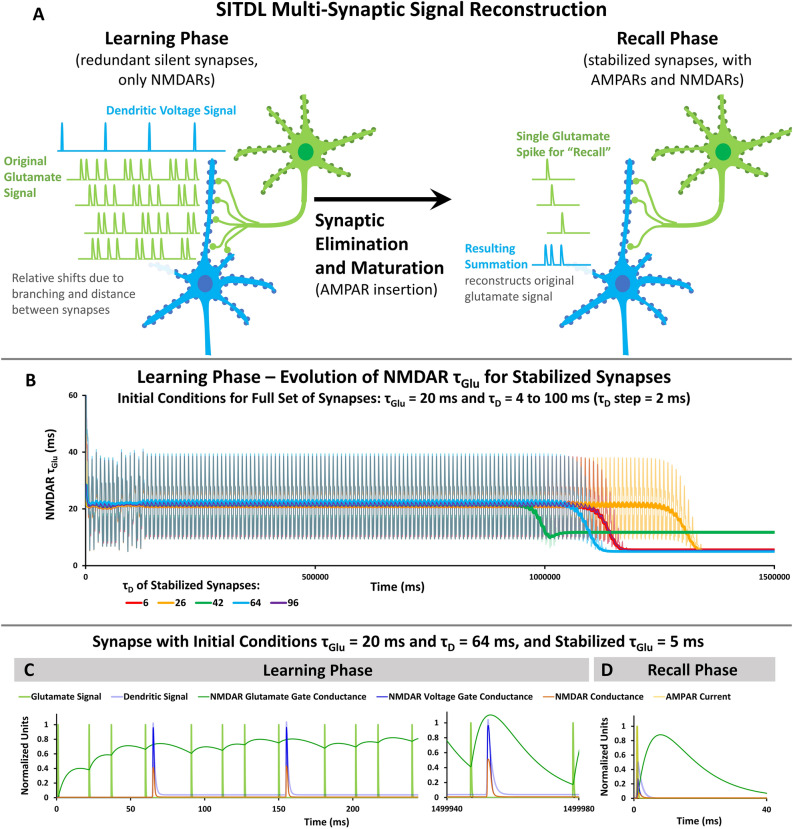Figure 5.
Multi-synaptic SITDL simulations of learning. (A) The Learning Phase starts with a large number of redundant synapses, each receiving the same periodic glutamate signal, delayed relative to a similarly periodic but sparse voltage signal by dendritic time constant τD. After learning, synapses are eliminated or stabilized based on overall NMDAR conductance. During the Recall Phase each mature stabilized synapse receives a single glutamate spike. The summation of resulting voltages across all stabilized mature synapses with the appropriate dendritic delays, produces a reconstruction of the original glutamate signal received during the learning phase. (B) Evolution of τGlu for synapses that were stabilized at the end of Learning Phase simulations. The full set of synapses started with initial conditions τGlu = 20 ms and τD values uniformly distributed from 4 to 100 ms, with a step of 2 ms. Synapses with insufficient average overall NMDAR conductance were eliminated, leaving only stabilized synapses, whose corresponding τD are shown. (C) An example of a Learning Phase simulation, showing how NMDAR conductances change over time for a synapse with initial τGlu = 20 ms and τD = 64 ms. The synapse receives a periodic glutamate signal and a sparse voltage signal with the same period. The first voltage spike occurs close to the fourth spike of the glutamate signal. At the end of the simulation the average overall NMDAR conductance is sufficient for this synapse to be stabilized. (D) Recall Phase simulation of stabilized synapse from (C) with final values τGlu = 5.0 ms and τD = 64 ms. Since stabilized synapses are assumed to express AMPARS, in this case the synapse receives a single glutamate spike coincident with a single voltage spike.

